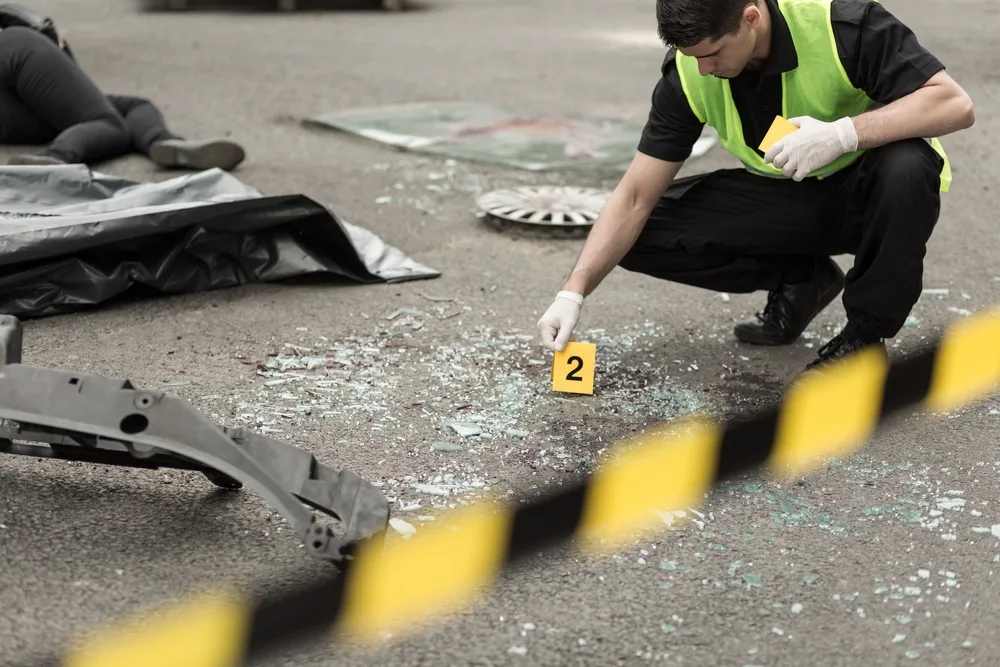Truck accidents can be catastrophic, resulting in loss of life, severe injuries, and significant property damage. They are a common phenomenon, especially on highways. A Forbes article shows that one-third of truck drivers have been involved in one or more deadly crashes in their driving careers. The survey participants were truck drivers at 32 rest stops across the US.
When these accidents occur, understanding the events leading to the collision is crucial for determining liability. It also helps improve safety measures and prevent future incidents. This is where forensic analysis plays a pivotal role. Through meticulous examination and reconstruction of the accident scene, forensic experts unravel the intricate details, providing valuable insights into what transpired.
In this article, we delve into the art of reconstruction, exploring how forensic analysis shapes truck accident investigations.
Understanding Forensic Analysis
Forensic analysis involves systematically examining evidence to establish facts and conclusions about past events. Forensic experts utilize a multidisciplinary approach encompassing engineering principles, physics, computer modeling, and human factors analysis in the context of truck accidents.
By combining these methodologies, they reconstruct the accident scenario with precision. This helps shed light on factors such as vehicle speed, trajectory, braking distance, and driver behavior.
Therefore, forensic technology services are on the rise in the US. An IBISWorld market study shows that they have increased at a CAGR of 3.7% over the past few years. They become even more important due to the rising number of truck accidents.
For instance, the St. Louis Post-Dispatch states that in 2022, there were 12,834 truck collisions on Missouri’s roads. Forensic analysis can help determine the common causes of these accidents, enabling law enforcement and drivers to take precautionary measures.
How Reconstruction Helps With Truck Accident Investigations
One of the primary benefits of forensic reconstruction in truck accident investigations is the ability to determine fault and liability. By reconstructing the accident scene, experts can ascertain different factors essential for determining who was at fault. This information is invaluable for insurance claims, legal proceedings, and improving road safety.
Most truck collisions result in severe injuries. You will usually find that semi-trucks or large commercial vehicles are more involved in fatal crashes than cars. For instance, a recent collision in St. Louis left one dead and another injured.
The crash occurred in the Kosciusko neighborhood in St. Louis. According to KSDK, the accident was between a 2005 Pontiac G6 and the 2019 Freightliner semi-truck. And guess what? It was the 2005 Pontiac G6’s driver who was dead.
In such cases, the victims or their families can file lawsuits against the negligent driver to receive compensation for their damages. An attorney can help file a lawsuit and represent the victim throughout the legal battle.
According to TorHoerman Law, the lawyer can also help collect evidence to strengthen the victim’s case. The evidence is vital to prove that the collision resulted from the other driver’s fault, which can help increase compensation.
A local lawyer can communicate with forensic experts to understand what their analysis showed, thereby helping with the case. Thus, forensic analysis can help close legal proceedings quickly.
Let’s consider the aforementioned St. Louis semi-truck accident case. In this case, if forensic reconstruction can prove the truck driver was at fault, it can help the dead person’s family.
On the other hand, if the analysis proves otherwise, it determines that the accident and the death were not the truck driver’s fault. In both cases, a St. Louis truck accident lawyer can help serve justice with the insights generated by forensic analysis through reconstruction.
Forensic reconstruction also helps identify contributing factors to truck accidents, such as mechanical failures, driver error, or environmental conditions. By thoroughly examining the evidence, investigators can pinpoint defects or malfunctions in the truck’s components.
These insights can help create strategic plans to reduce the number of truck accidents. For example, The Oklahoma Department of Transportation started an agency-wide performance measure system based on the vision of Toward Zero Death. The vision aims to mitigate highway collisions in their entirety. The plan aimed for an annual 2% reduction in fatalities for the next five years.
The Process of Reconstruction
The journey of reconstruction begins at the accident scene. Forensic investigators meticulously document the site, capturing physical evidence such as skid marks, vehicle debris, and damage patterns. Advanced surveying techniques, including total stations and 3D laser scanning, ensure accurate measurements of the scene topology.
Next, data retrieval is paramount. Modern trucks have event data recorders (EDRs) or “black boxes,” which store crucial information such as speed, throttle position, brake application, etc. Thanks to the information captured by these black boxes, the government and law enforcers can determine common causes of accidents.
Forensic experts extract and analyze this data to reconstruct the vehicle’s movements leading up to the accident. Therefore, black boxes become crucial. The European Union has decided that all cars should have black boxes. According to Motor1.com, all newly registered European cars will have black boxes starting July 2024.
Simultaneously, vehicle examination takes place in controlled environments such as forensic laboratories. Detailed inspections of the trucks provide insights into mechanical failures, maintenance issues, and component malfunctions that may have contributed to the crash.
Once all relevant data is gathered, reconstruction specialists employ computer simulations and mathematical models to recreate the accident sequence. Using specialized software, they input variables such as vehicle dynamics, road conditions, weather factors, and human reactions to generate accurate simulations.
Challenges and Complexities
Forensic analysis in truck accident investigations is not without its challenges. Factors such as incomplete or tampered evidence, unreliable witness testimonies, and legal complexities can complicate reconstruction. Moreover, the dynamic nature of truck accidents, often involving multiple vehicles and complex interactions, requires a comprehensive understanding of collision dynamics.
Human factors also play a significant role. Driver behavior, distractions, fatigue, and impairment can significantly influence the outcome of a collision. Forensic experts must carefully assess these factors to provide a holistic understanding of the accident.
Despite these challenges, advancements in technology and methodology continue to enhance the accuracy and reliability of forensic analysis in truck accident investigations.
Frequently Asked Questions
What Are the Sources of Forensic Information From Accident Scenes?
Forensic information from accident scenes primarily comes from various sources, such as physical evidence like skid marks, vehicle damage, and road conditions. Additionally, witness testimonies, CCTV footage, and data from vehicle event recorders are valuable sources. Combining these sources provides a comprehensive view of reconstruction.
What Are the Components of an Accident Investigation?
Accident investigations typically consist of several key components. Initial documentation involves gathering evidence, documenting the scene, and preserving relevant data. Analysis of physical evidence and witness statements follows, aiding in determining the sequence of events. Finally, reports and conclusions are drawn based on the analysis, providing insights into the causes and contributing factors of the accident.
How Do You Reconstruct an Accident Scene?
Reconstructing an accident scene involves meticulous examination and analysis of available evidence. This process includes mapping the scene, documenting vehicle positions, analyzing damage patterns, and determining factors such as speed and direction of travel. Advanced techniques such as computer simulations may also be employed to accurately model the sequence of events.
To conclude, forensic analysis is a cornerstone of truck accident investigations, offering a scientific approach to unraveling the complexities of collisions. Forensic experts provide invaluable insights into the factors contributing to accidents through meticulous examination, data analysis, and reconstruction.
This ultimately facilitates justice, safety improvement, and prevention efforts. As technology evolves and methodologies advance, reconstruction remains essential in ongoing efforts to mitigate the impact of truck accidents on our roads.
Stay in touch to get more updates & news on Discover Tribune!


